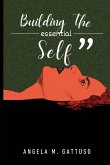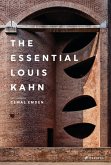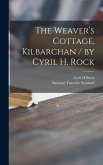Over the course of the following three decades, Whyte led the charge to preserve what was best in America's great cities in the face of an increasingly suburbanized culture oriented to the automobile. Whyte's book The Last Landscape (1968) was immediately adopted as a primer for planners and a growing group of citizens interested in the proper management of cities and their surrounding areas. Described by Whyte as a book "about the way our metropolitan areas look and might look", this classically straightforward -- and optimistic -- discussion of conservation strategies such as open space easements, local land trusts, and cluster development remains pressingly urgent in its contemporary appeal.
Whyte's fascination with cities led to the creation of the Street Life Project, a ten-year study of the dynamics of how people interact with the urban environment. The crowning achievement of Whyte's career came with the publication of City: Rediscovering the Center (1988). In these pages Whyte distilled the results of his extensive empirical research into a celebration of why people are naturally drawn to the vibrant center of a city and what planners can do to encourage a healthy relationship between citizen and city.
Whyte's conclusions in City ringingly affirmed what it has taken postwar America all too long to discover for itself: that the diaspora of suburbanization represents a betrayal not only of the efficiency of our social infrastructure but also of people's innate preference for lively social interaction. So it is that in the late 1990s Whyte's work over a period of four decades is being rediscovered by a new generation of urban planners and concerned citizens.
The Essential William H. Whyte offers the core writings of a great observer of the postwar American scene. Included are selections from The Organization Man, Securing Space for Urban America: Conservation Easements, The Last Landscape, The Social Life of Urban Spaces, and City: Rediscovering the Center, as well as many of Whyte's articles from Fortune Magazine.
Hinweis: Dieser Artikel kann nur an eine deutsche Lieferadresse ausgeliefert werden.
Whyte's fascination with cities led to the creation of the Street Life Project, a ten-year study of the dynamics of how people interact with the urban environment. The crowning achievement of Whyte's career came with the publication of City: Rediscovering the Center (1988). In these pages Whyte distilled the results of his extensive empirical research into a celebration of why people are naturally drawn to the vibrant center of a city and what planners can do to encourage a healthy relationship between citizen and city.
Whyte's conclusions in City ringingly affirmed what it has taken postwar America all too long to discover for itself: that the diaspora of suburbanization represents a betrayal not only of the efficiency of our social infrastructure but also of people's innate preference for lively social interaction. So it is that in the late 1990s Whyte's work over a period of four decades is being rediscovered by a new generation of urban planners and concerned citizens.
The Essential William H. Whyte offers the core writings of a great observer of the postwar American scene. Included are selections from The Organization Man, Securing Space for Urban America: Conservation Easements, The Last Landscape, The Social Life of Urban Spaces, and City: Rediscovering the Center, as well as many of Whyte's articles from Fortune Magazine.
Hinweis: Dieser Artikel kann nur an eine deutsche Lieferadresse ausgeliefert werden.








